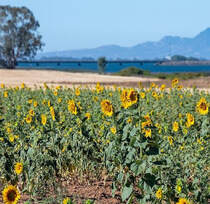 October 22, 2021 Flood Preparedness Week More than seven million California residents are at risk of flooding, and many don’t realize it. Flooding happens throughout the state; every California county has received a flood-related emergency declaration in the past 20 years and flood events during and after drought conditions are not uncommon. Make sure you are prepared for flood events through these three steps:
This year, many communities are at additional risk for flooding because of wildfire damage as evidenced by this week’s National Weather Service’s Flash Flood Watch for the North Complex and Dixie wildfire burn scar areas. Wildfires dramatically change the landscape and ground conditions in a watershed. Natural, unburned vegetation and soil normally act as a sponge during a rainfall event. However, the heat from a fire can bake the ground, creating a surface that will not absorb water and can increase the speed with which water flows off the slope, leading to damaging, and sometimes catastrophic, mud and debris flows. These conditions can be present for years after a wildfire. Visit DWR’s Flood Preparedness webpage for information about keeping you, your loved ones, and community safe. Water Quality Working Group In late fall of 2020, Butte County, the Governor’s Office of Emergency Services (CalOES), Department of Water Resources (DWR), State Water Resources Control Board and Regional Water Quality Control Boards (Water Boards), California Department of Fish and Wildlife, California Department of Parks and Recreation, and local water purveyors formed the North Complex Watershed Working Group to monitor and evaluate watershed and infrastructure response to the North Complex wildfire from 2020. This working group has expanded its scope to include impacts from the 2021 Dixie Fire and will now be called the Feather River Watershed Working Group (Working Group). Additional partner agencies, including affected counties such as Plumas County, have joined others from local, state, and federal levels to coordinate regarding water quality and infrastructure impacts in the watershed. Members of the Working Group also provide technical guidance and expertise to local agencies and partners on water quality monitoring and protections in the post-fire environment. The Working Group is preparing for the upcoming rainy season and currently meets bi-weekly, with the option to increase meeting frequency as the season progresses. The Working Group will continue to provide the public with informational updates on watershed conditions and water quality testing results as they become available. The summary of last year’s findings can be found on the Water Boards’ July 8, 2021 news release. 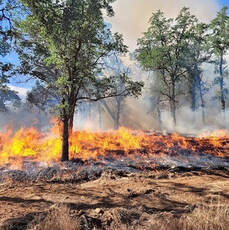 Lake Oroville Boating The temporary, single-lane boat ramp at Oroville Dam’s Spillway Boat Ramp area has reopened for public use from 6 a.m. to 8 p.m. to launch trailered boats. Vehicles within the parking lot at closing time will be locked in until the next morning. Lake levels are expected to substantially increase as a result of weekend storms. Boaters are advised to park vehicles and trailers well above lake level when boating on the lake. The spillway auxiliary ramp has a gravel surface which becomes slippery when wet, especially during times of heavy usage. To maintain the integrity of the ramp, drivers must avoid tire spin by placing vehicles in 4-wheel drive and accelerating slowly when exiting the ramp, with or without a loaded trailer. As weather conditions and lake levels change, the fitness of the ramp for continued use will be regularly assessed. Boaters on the lake are advised to be aware of unexpected shallow water and obstruction hazards such as partially submerged trees now that lake levels have reached historic lows. State Parks has issued an order for the Lake Oroville State Recreation Area (LOSRA) that boating access on Lake Oroville is not permitted starting one-half hour after sunset and ending one-half hour before sunrise due to navigational hazards. Houseboats and vessels remaining on the water must be on their mooring ball or in a slip during hours of lake closure. Additional information can be obtained by calling State Parks at (530) 538-2200. All access to boats and houseboats at both Bidwell Canyon and Lime Saddle Marinas must be coordinated through the marina prior to arrival by calling 530-589-9175 or by utilizing the shuttle service at Bidwell Canyon Marina. Shuttle services to Lime Saddle Marina is not being provided at this time. The Thermalito Afterbay and Thermalito South Forebay continue to be open to power boating. Photo: Oroville Dam Spillway temporary boat ramp 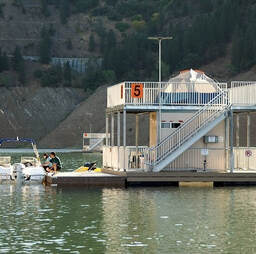 CAL FIRE Work at Loafer Creek Beginning Friday Oct.22, the Butte County burn suspension will be lifted and residential and fire hazard reduction burning will be allowed on permissive burn days. Crews from the Butte Fire Center and CAL FIRE are taking advantage of wet weather to start burning the piles of brush, burnt vegetation, and hazard trees that was removed last season in the North Complex wildfire burn scar. Smoke from the burn piles may be visible from the Oro Quincy Highway (Highway 162). The CAL FIRE news release is available here. Through DWR’s Fuel Load Management Program, DWR partners with CAL FIRE, the California Conservation Corps, Butte County Sheriff Office, Butte County Fire Safe Council, and others on vegetation management projects to reduce fire risk, increase public safety, protect infrastructure, and enhance forest health in areas around Lake Oroville. Approximately 840 acres have been manually thinned, re-thinned, grazed, and/or treated with prescribed fire since November 2012. DWR’s goal is to treat 150 acres this season. Photo: CAL FIRE pile burning project 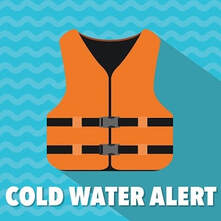 Oroville Recreation Numerous Day Use Area (DUA) facilities with picnic tables and restrooms at Lake Oroville State Recreation Area (LOSRA) are open 8 a.m. to sunset. Bidwell, Lime Saddle, and Loafer Creek recreation areas are open 24 hours. The Oroville Dam Crest Road across Oroville Dam is available 5 a.m. to 11 p.m. daily with the Spillway trailhead and boat launch open from 6 a.m. to 8 p.m. The top of the dam is open to pedestrians and bicyclists 24-hours a day. The Lake Oroville Visitor Center anticipates re-opening later this year. Over 97 miles of trails around Lake Oroville, along the Feather River, Thermalito Diversion Pool, Forebays and Afterbay, and the Oroville Wildlife Area are available to equestrians, bicyclists, and hikers wishing to explore Oroville’s natural beauty in the cooler fall weather. Trail maps are available at many Oroville locations including Lake Oroville State Recreation Area (LOSRA) kiosks, Oroville Wildlife Area office on Oro Dam Boulevard West, the Oroville Area Chamber of Commerce, and Feather River Recreation and Parks District. The Forebay Aquatic Center at the North Forebay recreation area has closed for the season but the recreation area remains open with picnic tables, restrooms, and beach facilities. Visit the California Parks LOSRA webpage for current information on facility status and campground reservations. An interactive map of recreation facilities in DWR’s Oroville-Thermalito Complex is available on DWR’s Lake Oroville Recreation webpage. Information about the 11,000-acre Oroville Wildlife Area is available on the California Department of Fish and Wildlife webpage. Photo: Equestrians riding on the Sewim Bo Trail 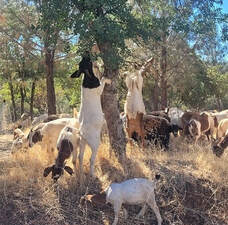 Chinook Salmon Spawning in the Feather River Chinook salmon are completing their life cycle and returning home to the Feather River to lay eggs for the next generation of salmon. The Feather River Fish Hatchery’s fish ladder is open and hatchery spawning operations – which enable millions of Chinook salmon to be released to the river every spring – are underway. To protect public health during the COVID-19 pandemic, the hatchery continues to be closed. Visitors can still enjoy seeing salmon climb the fish ladder at the Underwater Viewing Area and Overlook near the Feather River’s Fish Diversion Dam north of the hatchery. The public is urged to maintain physical distancing and abide by Butte County requirements for mask-wearing to protect personal health and the health of others. Photo: Visitors watch salmon jump at the Feather River Fish Hatchery Overlook near the Fish Diversion Dam Loafer Point Stage II Boat Ramp Extension Construction work to extend three lanes of the Loafer Point Stage II boat ramp farther into the dry lakebed of Lake Oroville continues. Earthwork and ramp construction will continue until winter precipitation causes lake levels to rise. The existing Stage II facility was completed this spring, providing six new boat launch lanes extending to elevation 702 feet and 180 trailered parking spaces. The new launch lanes are anticipated to go as low as 640 feet elevation. Visitors and nearby residents are reminded to be aware of construction equipment and vehicles, including those entering and exiting the Loafer Creek recreation area at Oro-Quincy Highway. Current Lake Operations The elevation of Oroville’s reservoir is about 629 feet elevation and storage is about 792,000-acre-feet, which is 22 percent of its total capacity and 37 percent of historical average. Water year 2022 is starting off with a series of atmospheric river storms making landfall in northern California over the next six days. The Feather River watershed is forecasted to see up to 10 inches of rain during that time. Although the storms will not be enough to end the drought conditions, they will provide much needed rainfall to the very dry Feather River watershed. Saturated soils in the watershed will result in higher runoff into streams, rivers, and reservoirs and is anticipated to result in an approximately 20-feet increase in Lake Oroville’s lake elevation. Visitors are advised to park well above lake level when visiting or boating on the lake. Total flows to the Feather River are 1,250 cubic feet per second (cfs) for meeting downstream water quality and flow requirements. Flow in the low-flow channel, through the City of Oroville, is 650 cfs and flow through the Thermalito Afterbay Outlet is 600 cfs. Total releases to the Feather River are assessed daily. The public can track precipitation, snow, reservoir levels, and more at the California Data Exchange Center at www.cdec.water.ca.gov. Lake Oroville is identified as “ORO”. All data as of midnight 10/21/2021 ### Know someone who would like to receive Community Updates? They can email their request to [email protected].  October 8, 2021 Loafer Point Stage II Boat Ramp Extension Historic low lake levels at Lake Oroville are allowing DWR to extend three lanes of the Loafer Point Stage II boat ramp farther into the dry lakebed. Work to create the new boat launch lanes began this week and will continue until winter precipitation causes lake levels to rise. The existing Stage II facility was completed this spring, providing six new boat launch lanes extending to elevation 702 feet and 180 trailered parking spaces. The Loafer Point Stage II facility is adjacent to an existing Loafer Creek Recreation Day Use Area and Campground, rounding out a full-service recreation destination with nearby trails, campgrounds, boating, and marina store. Additionally, immediate access to the wide-open waters of Lake Oroville makes Loafer Point a popular boat launching location. The Loafer Point Stage I boat launch facility, completed in 2020, added three new boat launch lanes from a full lake down to 799 feet, a new Americans with Disabilities Act (ADA) compliant parking area, and new restroom facilities. Visitors and nearby residents are reminded to be aware of construction equipment and vehicles, including those entering and exiting the Loafer Creek recreation area at Oro-Quincy Highway. Photo: Loafer Point Stage II Boat Ramp (July 2021) 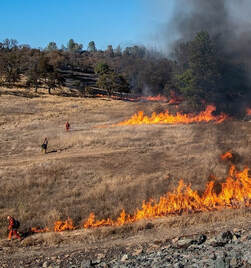 Fuel Load Management Continues Fuel reduction hand crews and heavy equipment operators from Butte Fire Center and CAL FIRE have returned to the Loafer Creek Recreation Area. Crews will be cutting, chipping, and piling burnt vegetation and hazard trees within the North Complex burn scar. Piles will be burned later this season when weather conditions are favorable. Heavy equipment and crews may be visible from Highway 162. Crews will also be prepping previously treated areas throughout Loafer Creek for a possible prescribed burn later this season. The Department of Water Resources (DWR), in partnership with California Conservation Corps and Butte County Sheriff Office, is developing plans for various fuel reduction projects throughout the Lake Oroville State Recreation Area (LOSRA). When crews are available, they will hand cut and chip prioritized overgrown vegetative areas within the Federal Energy Regulatory Commission (FERC) project boundary. Areas of concern are the Highway 162 corridor, Kelly Ridge area, the Feather River Fish Hatchery, LOSRA, and nearby infrastructure. The DWR Fuel Load Management Plan (FLMP) goal is to reduce wildfire risk and increase public safety around the FERC project boundary including Lake Oroville. With help from area partners, approximately 840 acres have been manually thinned, re-thinned, grazed, and/or treated with prescribed fire since November 2012. DWR’s goal is to treat 150 acres this season. Photo: Butte Fire Center crews assist in the North Complex burn scar at Loafer Creek recreation area 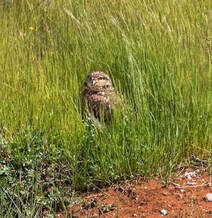 Bryozoans Visible Again in Lake Oroville Have you seen these ‘creatures’ in Lake Oroville? Bryozoans are freshwater, aquatic invertebrates. There are nearly 5,000 species of bryozoans found throughout the world, and the majority are marine animals. Instead of being a single organism like a jellyfish, bryozoans are made up of thousands of individual microscopic animals called zooids, living in a colony. A single colony will vary in size from approximately 12 to 20 inches but some can grow bigger in diameter. These jelly-like colonies can be found attached to submerged branches, rocks, ropes, and even on houseboat pontoons and motors. They typically appear during the summer and fall months when lake levels are low. Freshwater bryozoans are harmless and non-toxic, though they can occasionally clog underwater objects. Photo: Bryozoan colonies are now visible at Lake Oroville Palermo Tunnel Bulkhead Project DWR engineers and contractors are working to re-install a refurbished bulkhead (controls inflow of water) at the submerged Palermo Tunnel Intake Structure in Lake Oroville next week. A frame and pulley system to make future installations easier will also be installed. The work will be done from a barge on the lake positioned near the Hyatt Powerplant intake structures. Cranes are being used to assemble the barge near Oroville Dam’s Spillway Boat Ramp area over the next couple of weeks. Scuba dive crews and remotely operated vehicle work to install the bulkhead is scheduled for early November. The Palermo Tunnel conveys water from Lake Oroville to the Palermo Canal, a source of water for the South Feather Water and Power Agency, which distributes water to the communities of Oroville, Palermo and Bangor. 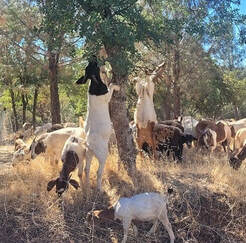 Oroville Recreation The Spillway Day Use Area, Trailhead, and car-top launch ramp are now on Winter Hours, open from 6 a.m. to 8 p.m. Launching of trailered boats at Lake Oroville’s temporary single-lane boat ramp at the Spillway Boat Ramp area remains closed due to unsafe conditions. Hand launching of small boats such as canoes or kayaks is permitted. As lake levels change, the condition of the ramp continues to be reassessed for future use. The Bidwell Canyon Marina at Lake Oroville remains open and is providing shuttle service to boat owners from 8 a.m. until sundown. Boaters are advised to be aware of hazards now that lake levels have reached historic lows. The Thermalito Afterbay and Thermalito South Forebay are open to power boating. The Forebay Aquatic Center at the North Forebay recreation area has closed for the season but the recreation area remains open with picnic tables, restrooms, and beach facilities. Numerous Day Use Area (DUA) facilities with picnic tables and restrooms at Lake Oroville State Recreation Area (LOSRA) are open 8 a.m. to sunset. Bidwell, Lime Saddle, and Loafer Creek Recreation Areas are open 24 hours. The Oroville Dam Crest Road across Oroville Dam is available 5 a.m. to 11 p.m. daily and open to pedestrians and bicyclists 24-hours a day. The Lake Oroville Visitor Center anticipates re-opening later this fall. Over 97 miles of trails around Lake Oroville, along the Feather River, Thermalito Diversion Pool, Forebays and Afterbay, and the Oroville Wildlife Area are available to equestrians, bicyclists, and hikers wishing to explore Oroville’s natural beauty. Trail maps are available at many Oroville locations including Lake Oroville State Recreation Area (LOSRA) kiosks, Oroville Wildlife Area office on Oro Dam Boulevard West, the Oroville Area Chamber of Commerce, and Feather River Recreation and Parks District. Visit the California Parks LOSRA webpage for current information on facility status and campground reservations. An interactive map of recreation facilities in DWR’s Oroville-Thermalito Complex is available on DWR’s Lake Oroville Recreation webpage. Information about the 11,000-acre Oroville Wildlife Area is available on the California Department of Fish and Wildlife webpage. Photo: Sailing on the Thermalito South Forebay Cold Water Temperatures Water temperatures in the Feather River and the Thermalito Diversion Pool, Forebay, and Afterbay continue to range between 48- and 58-degrees Fahrenheit as very cold water from the bottom of Lake Oroville is released through Oroville Dam’s River Valve Outlet System (RVOS). Persons recreating on these waterbodies are advised to wear life jackets. Entering cold water on hot summer days can result in ‘cold water shock’, causing breathing difficulties as well as changes in heart rate and blood pressure and can be life threatening, especially without a life jacket to help you stay afloat. Find cold-water safety tips at the National Weather Service’s Safety webpage. Current Lake Operations The elevation of Oroville’s reservoir is about 629 feet elevation and storage is about 793-thousand acre-feet, which is 22 percent of its total capacity and 36 percent of historical average. Temperatures are forecasted to be in the low to mid-70s this weekend and into the following week. Total flows to the Feather River are 1,250 cubic feet per second (cfs) for meeting downstream water quality and flow requirements. Flow in the low-flow channel, through the City of Oroville, is 650 cfs and flow through the Thermalito Afterbay Outlet is 600 cfs. Total releases to the Feather River are assessed daily. The public can track precipitation, snow, reservoir levels, and more at the California Data Exchange Center at www.cdec.water.ca.gov. Lake Oroville is identified as “ORO”. All data as of midnight 10/7/2021 ### Know someone who would like to receive Community Updates? They can email their request to [email protected]. 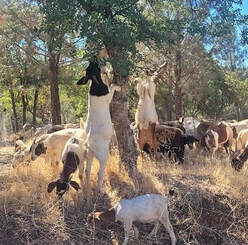 October 1, 2021 Salmon Festival The annual Oroville Salmon Festival was held Saturday, September 25 to celebrate the return of salmon to the Feather River. Centered around historic downtown Oroville and the newly renovated Oroville Convention Center (formerly Memorial Auditorium), attendees enjoyed an activity zone, food vendors, music, craft fair, car show, a downtown street fair, and informational booths. The Feather River Fish Hatchery (FRFH) remains closed, but the Fish Barrier Dam Overlook, fish ladder, and underwater viewing window continue to be open to the public. A video virtual tour of the hatchery is available on the DWR YouTube channel. Photo: Providing education to youth at DWR booth - Salmon Festival 2021 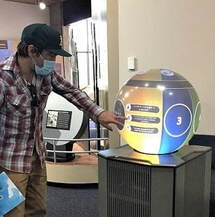 Loafer Point Stage II Boat Ramp Extension Historic low lake levels at Lake Oroville are allowing DWR to extend three lanes of the Loafer Point Stage II boat ramp farther into the dry lakebed. Work to create the new boat launch lanes will begin the week of Oct. 4 and will continue until winter precipitation causes lake levels to rise. The existing Stage II facility was completed this spring, providing six new boat launch lanes extending to elevation 702 feet and 180 trailered parking spaces. The Loafer Point Stage II facility is adjacent to an existing Loafer Creek Recreation Day Use Area and Campground, rounding out a full-service recreation destination with nearby trails, campgrounds, boating, and marina store. Additionally, immediate access to the wide-open waters of Lake Oroville makes Loafer Point a popular boat launching location. The Loafer Point Stage I boat launch facility, completed in 2020, added three new boat launch lanes from a full lake down to 799 feet, a new Americans with Disabilities Act (ADA) compliant parking area, and new restroom facilities. Visitors and nearby residents are reminded to be aware of construction equipment and vehicles, including those entering and exiting the Loafer Creek recreation area at Oro-Quincy Highway. Photo: Loafer Point Stage II Boat Ramp (July 2021) 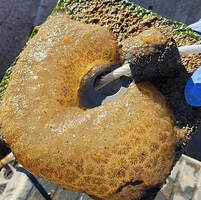 Bryozoans Visible Again in Lake Oroville Have you seen these ‘creatures’ in Lake Oroville? Bryozoans are freshwater, aquatic invertebrates. There are nearly 5,000 species of bryozoans found throughout the world with the majority being marine animals. Instead of being a single organism like a jellyfish, bryozoans are made up of thousands of individual microscopic animals called zooids, living in a colony. A single colony will vary in size from approximately 12 to 20 inches but some can grow bigger in diameter. These jelly-like colonies can be found attached to submerged branches, rocks, ropes, and even on houseboat pontoons and motors. They typically appear during the summer and fall months when lake levels are low. Freshwater bryozoans are harmless and non-toxic, though they can occasionally clog underwater objects. Photo: Bryozoan colonies are now visible at Lake Oroville Palermo Tunnel Bulkhead Project Department of Water Resources (DWR) engineers and contractors will begin a project to re-install a refurbished bulkhead (controls inflow of water) at the submerged Palermo Tunnel Intake Structure in Lake Oroville next week. A frame and pulley system to make future installations easier will also be installed. The work will be done from a barge on the lake positioned near the Hyatt Powerplant intake structures. Inspection for quagga mussels and barge assembly, including the use of cranes, will take place near Oroville Dam’s Spillway Boat Ramp area over the next couple of weeks. Actual dive and remotely operated vehicle work to install the bulkhead is scheduled for early November. The Palermo Tunnel conveys water from Lake Oroville to the Palermo Canal, a source of water for the South Feather Water and Power Agency, which distributes water to the communities of Oroville, Palermo and Bangor. 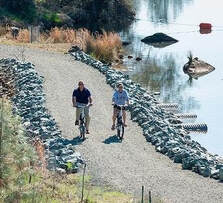 Oroville Recreation Over 97 miles of trails around Lake Oroville, along the Feather River, Thermalito Diversion Pool, Forebays and Afterbay, and the Oroville Wildlife Area are available to equestrians, bicyclists, and hikers wishing to explore Oroville’s natural beauty. A map of the trails maintained by DWR and California Department of Parks and Recreation (State Parks) is now available at many Oroville locations including Lake Oroville State Recreation Area (LOSRA) kiosks, Oroville Wildlife Area office on Oro Dam Boulevard West, the Oroville Area Chamber of Commerce, and Feather River Recreation and Parks District. Visitors to the Thermalito North Forebay will find a full CA Parks facility with restrooms, picnic areas, a swim beach, and the Forebay Aquatic Center with kayaks, paddle boards, and other watercraft available for rent. Numerous Day Use Area (DUA) facilities with picnic tables and restrooms at Lake Oroville State Recreation Area (LOSRA) are open 8 a.m. to sunset. Bidwell, Lime Saddle, and Loafer Creek Recreation Areas are open 24 hours. The Oroville Dam Crest Road across Oroville Dam is available 5 a.m. to 11 p.m. daily and open to pedestrians and bicyclists 24-hours a day. The Lake Oroville Visitor Center anticipates re-opening later this fall. Launching of trailered boats at Lake Oroville’s temporary single-lane boat ramp at the Spillway Boat Ramp area remains closed due to unsafe conditions. Hand launching of small boats such as canoes or kayaks is permitted. As lake levels drop, the condition of the ramp continues to be reassessed for future use. The Bidwell Canyon Marina at Lake Oroville remains open and is providing shuttle service to boat owners from 8 a.m. until sundown. Boaters are advised to be aware of hazards now that lake levels have reached historic lows. The Thermalito Afterbay and Thermalito South Forebay are open to power boating. Visit the California Parks LOSRA webpage for current information on facility status and campground reservations. An interactive map of recreation facilities in DWR’s Oroville-Thermalito Complex is available on DWR’s Lake Oroville Recreation webpage. Information about the 11,000-acre Oroville Wildlife Area is available on the California Department of Fish and Wildlife webpage. Photo: Bicyclists on the Brad Freeman Trail near the Thermalito Diversion Pool Cold Water Temperatures Water temperatures in the Feather River and the Thermalito Diversion Pool, Forebay, and Afterbay continue to range between 48- and 58-degrees Fahrenheit as very cold water from the bottom of Lake Oroville is released through Oroville Dam’s River Valve Outlet System (RVOS). Persons recreating on these waterbodies are advised to wear life jackets. Entering cold water on hot summer days can result in ‘cold water shock’, causing breathing difficulties as well as changes in heart rate and blood pressure and can be life threatening, especially without a life jacket to help you stay afloat. Find cold-water safety tips at the National Weather Service’s Safety webpage. Current Lake Operations The elevation of Oroville’s reservoir is about 628 feet elevation and storage is about 787-thousand acre-feet which is 22 percent of its total capacity and 36 percent of historical average. Temperatures are forecasted to be in the low 90s with gradual cooling to the low 80s to mid-70s next week. Total flows to the Feather River are 1,250 cubic feet per second (cfs) for meeting downstream water quality and flow requirements. Flow in the low-flow channel, through the City of Oroville, is 650 cfs and flow through the Thermalito Afterbay Outlet is 600 cfs. Total releases to the Feather River are assessed daily. The public can track precipitation, snow, reservoir levels, and more at the California Data Exchange Center at www.cdec.water.ca.gov. Lake Oroville is identified as “ORO”. All data as of midnight 9/30/2021 ### Know someone who would like to receive Community Updates? They can email their request to [email protected]. |
Archives
October 2023
Categories
All
|
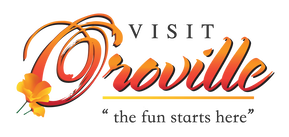
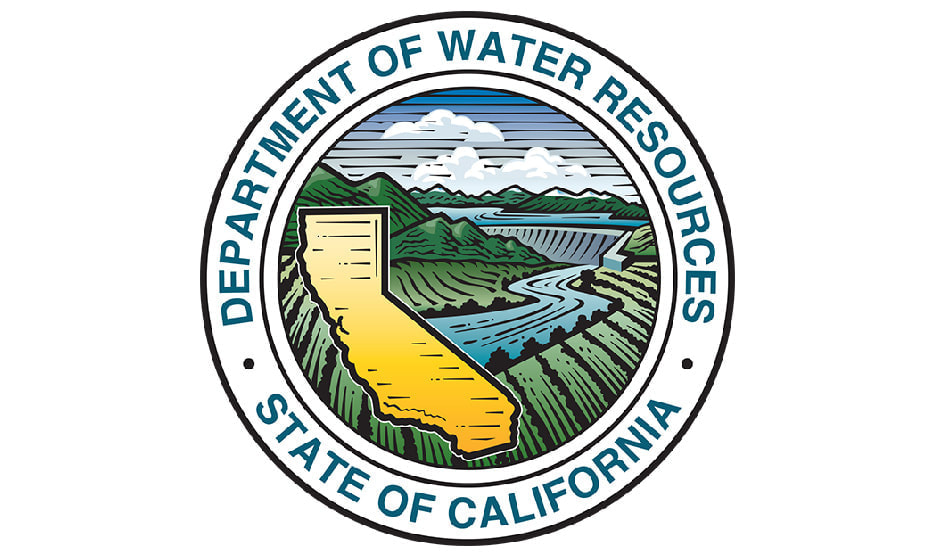
 RSS Feed
RSS Feed